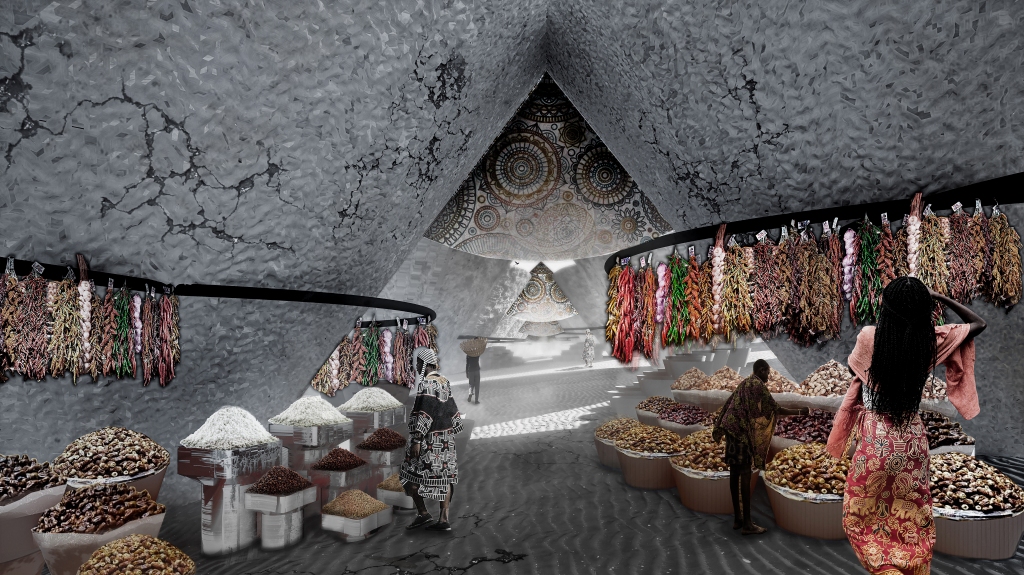Gum Arabic is a natural adhesive grown on the Senegalia Senegal tree. This tree grows in 6 years and only requires 100-200ml of water a year, this is a tree which has evolved to survive in the desert.
How can a third world country like Sudan can use a natural adhesive to act as a binder? How can we use the natural terrain as a framework for creating complex and controllable design?
Below the images illustrate how the construction process works.
https://vimeo.com/414603649 – Sucking Mechanism
I have designed a time-based construction programme. It begins with a setting out plan where string is used to determine where an industrial hoover (which usually transfers sand) sucks out sand and it is spewed out elsewhere. When my mix has been added to these cone shape voids the hoovering process is repeated but this time a thick layer of the Gum Arabic, Clay and Sand mix. The mixture is then lightly misted with salt water which causes the Gum Arabic to act as the binder. The Desert’s scorching sun then does the rest to solidify the material. Excavation around the land enables a structure which stands upright.
After exploring this method myself I discovered some interesting variations depending on whether I suck the sand first or pour it
I explored these forms digitally.
If you are wondering how I got to this point, well I will jump back to the beginning.

It started in Kew Gardens London, where I chose to study a plant and look into the early stages of bio-mimicry. I chose to study the Lotus Pod (Nelumbo Nucifera) found in Asia.
I wanted to find consistency between the holes of the flowers. Therefore I purchased 40 flower heads and begun experiments to study the arrangement of holes and the parameters within the plant. After experimenting I discovered that flower heads sized between 50-60mm have a gradient like effect where the largest hole is 3.5 times larger than the smallest. I therefore used Frei Ottos sand draining technique to explore what forms can be achieved with the arrangement of holes being that of the Lotus Pod.
After designing and building a smart box I began a matrix study.
I then Explored the parameters of each of these and found out that this sand grain drains at 30 degrees.
From this point I went on to look at how to solidify sand in its current form and that is when I discovered the properties of the Gum Arabic and began to explore. I had began to mix the mixture with sand and clay.

I then explored a site based on where Gum Arabic is produced and where sand and clay is in abundance. Therefore leaving me with Al-Fashir Sudan.

I then Explored the construction techniques using the gravity. Using the terrain as a natural formwork which can be moulded.



I then continued to design a construction process which requires less labour and would achieve high quality design attributes. Which is where I began with the hoovering process.

































































































